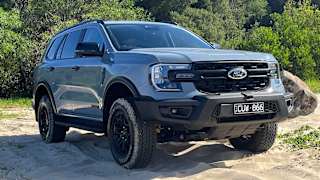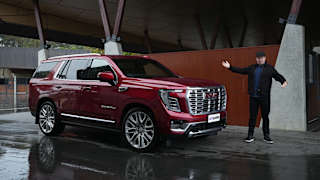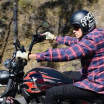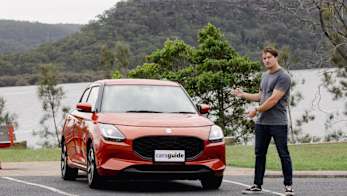Even at a time when fuel economy is top-of-mind with a growing number of Australian drivers there is plenty of space on the roads for Commodores and Falcons with old-fashioned V8 muscle under the bonnet. They burble menacingly at idle. They are the backbone of V8 Supercar racing.
Yet V8s in the 21st century are not what they were in the days when they first conquered Mount Panorama and a GTHO Falcon or a Monaro - or even a Valiant V8 - was a dream machine for a generation of Aussie youngsters.
Since 1970 the crude oil price has exploded from $20 a barrel to double that amount during the Iran revolution, over $70 during the first Gulf War, broke through the $100 barrier ahead of the Global Financial Crisis and has now settled at just below $100.
In Australia, petrol prices have correspondingly risen from about 8c a litre in 1970 to about 50c in 1984 and almost $1.50 today.
Despite all this, and despite one attempt at a death sentence by Ford in the 1980s, the V8 has not been wiped from Australian showrooms. Holden and Ford have continued to produce large cars with a V8 alternative and continue to slog it out at Bathurst.
But Australian cars, even the ones that now have American V8s imported for local use, are not the only bent-eight blasters on the road.
Germans are prolific builders of V8s and produce some of the most powerful engines in the world thanks to AMG-Mercedes, BMW and Audi. English V8s are built by Aston Martin, Land Rover and Jaguar, while the Americans provide V8s in the Chrysler 300C sold here. Even the Japanese luxury brand Lexus has a V8 in its IS F hero and its luxury saloon LS460, as well as the LandCruiser-cloned LX470.
Most V8s are powerful enough breathing ordinary air, but there are many forced-induction models with either turbo or supercharging to liberate even more power. Walkinshaw Performance does the job in Australia for Holden, BMW is going down the turbo V8 road for its latest M cars and Benz had a time with a supercharged AMG V8.
But V8s are not just about unrestricted power. The push for greater fuel economy has also reached V8 land and so Chrysler and Holden have V8s with multiple displacement technology which shuts down half the cylinders when the car is just cruising to improve fuel economy. Formula One racing engines now do the same thing when they are idling on a grand prix starting grid.
Holden's Active Fuel Management (AFM) was introduced on the V8 Commodore and Caprice in 2008 and the red lion brand is committed to the engine - with future technology updates - despite near-record fuel prices.
"It is incumbent on us to keep it relevant and continue introducing new technology that delivers on our customers' needs," says Holden's Shayna Welsh.
Holden has the biggest stake in V8s with more models than any other company selling in Australia. It has a total of 12 models with V8 engines across four nameplates and four body styles, including Commodore SS, SS V, Calais V, Caprice V and the recently introduced Redline range. V8s account for about one quarter of Commodore sedan sales and almost half of Ute sales.
"We see it as being more than just the V8 engine - it's about the entire car. It's the whole performance package that appeals to people and we want to continue making cars that people are proud to own," Welsh says.
"The combination of features and technology, great handling and braking and outstanding value is consistent across our V8 model range."
Ford fans are also committed to V8s, according to company spokesperson Sinead McAlary, who says a recent Facebook survey was overwhelmingly positive.
"We asked whether they worry about petrol prices and they say 'No, it's the sound of the V8 we love and we are prepared to pay the price'," she says.
Both Ford and Holden also have performance divisions where the V8 was, and still is, king. Ford's is Ford Performance Vehicles (FPV) and Holden's is Holden Special Vehicles (HSV).
HSV marketing manager Tim Jackson says their sales are "on par" with last year.
"That's despite the fact that last year we had the limited edition GX-P which is an entry level product for us," he says. "We don't have that model in our range at all this year and you would expect numbers to come off, but we've been able to maintain sales volume."
All of HSV's range are powered by a naturally aspirated V8 engine (6200cc 317kW-325kW), while the opposition at FPV has gained the kilowatt advantage with forced induction (supercharged 5000cc 315kW-335kW).
Jackson says their LS3 V8 has been "validated" by customers.
"We're not getting guys screaming at us to go turbocharging. The LS3 is an extraordinary unit. It's a light engine with a good power-to-weight figure. There is not a turbo engine that would do it for us at the right development cost. But I wouldn't rule it (turbo) out or rule it in."
Jackson says there have been no repercussions from the rise in petrol prices.
"Our customers don't have other choices in their repertoire," he says. "A small car doesn't suit them and they're not into an SUV. They're of a certain level where the whole cost of running the car is easy for them to absorb."
The top-selling HSV is the ClubSport R8, followed by the Maloo R8, then GTS.
However, the greatest HSV in history is debatable, Jackson says.
HSV engineering boss Joel Stoddart prefers the all-wheel-drive Coupe4 and sales boss Darren Bowler the SV5000.
"The Coupe4 is special because of its engineering but I like the W427 because it's the fastest," Jackson says.
FPV boss Rod Barrett says they are also experiencing strong sales growth. He says they sold about 500 cars in the first quarter, which is up 32 per cent on the previous year. He also says sales of the F6 have slowed since the launch of the supercharged V8 engine variants late last year, as customers "opt for power". Ford no longer offers a V8 with the demise of the XR8 sedan and ute last year.
"Our middle name is performance so we have all the V8s," Barrett says. "When we were launching this new supercharged car all the V8s came across here."
Barrett says their supercharged engine has changed people's minds about "dinosaur V8s".
"The turbocharged F6 was a cult hero car in its day and people thought a V8 was a low-tech dinosaur," he says. "But when we produced a high-tech all-alloy five-litre supercharged V8 built in Australia people started to think that V8s aren't all that bad after all. I'm not seeing the demise of the V8 just yet, but for us, the future is hi-tech."
The supercharged 5.0Litre V8 335kW FPV GT continues to be FPV's top-selling vehicle followed closely by the supercharged V8 5.0 litre 315kW GS sedan and GS ute.
Barrett believes the current GT is the best FPV car yet with its segment-leading power, light weight and improved fuel economy.
"However, I think our most iconic car was the 2007 BF Mk II 302kW Cobra in white with blue stripes. That car brought back the passion of '78 with the original Cobra. If you have a look at the second-hand prices, they are still holding up very well" he says.







.jpg)
.jpg)

.jpg)
.jpg)
.jpg)

















.jpg)


.jpg)